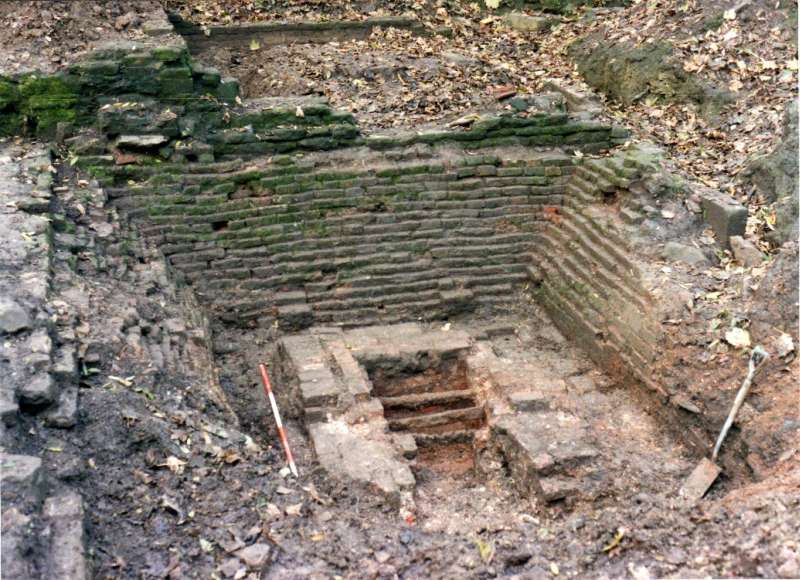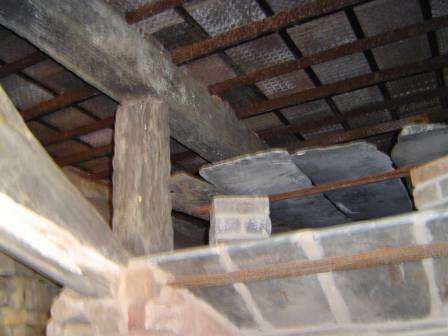Several individuals & organizations have added to our knowledge and understanding of Watermills & Kilns. We thank them and include some of the information below:-
Wigan Archaeology have excavated Standish Hall Corn Mill over a number of years. They discovered that the kiln was built into a pit. At the moment we haven't found anything like this.

They have also provided us with an image of a kiln in North Wales. The slate and the kiln tiles look familiar.

Another source of information is Janet Edmunds who lived in the cottage adjacent to Goosnargh Mill for several years and produced a number of articles on the Mill. Extracts and personal communications follow.
After discovering the "French Burr" millstone an article called "Milling through the ages at Goosnargh Mill" by Janet Edmunds was discovered. In it we find:-
There were different types of [mill]stone - top meal stone, bottom meal stone, bottom shilling stone.. and French stone. The wear on the stones in 1836 was charged to the tenent.
10s per inch for wear of the meal & shilling stones £4-10s per inch of wear for the French stone [and the wear on the French stone was much less than the "normal" stone.]
Meal stones were used for oats, shilling stones for husking. The French stones (of French burr stone) were used for grinding wheat as millstone grit though adequate for oats, was too soft for wheat. The equivalent cost of the French stones would be in the order of several thousand pounds today.
Janet Edmunds (personal communication) in response to a query re cellar in Kilns & kiln tiles.
Kilns were on two floors, but I think it most unlikely there was a cellar, it would have been too damp and not enough draught. The fire would have been on the ground floor and the drying floor supported on the first floor. I expect you have either got a collapse of the drying floor, or else where tiles have been discarded. More recent kilns have metal supports for the tiles, but older ones must have had some sort of stone or slate beams. The drying floor is usually wider than the floor with the fire, so there was a sort of 3 dimensional arch from the floor, like a vault in reverse, going to the corners. This allowed the heat to disperse; they needed a gentle heat. The floor was covered with a horse-hair cloth to stop the grain blocking the holes. Kilns are normal in the west of the country, as not only is there more rain, but oats need to be dried as they are a soft grain that absorbs moisture. They are not threshed like wheat, as the husk doesn’t come off easily, but shelled using the mill stones. Sometimes just the normal stones set further apart, otherwise the mill had separate shelling or shilling stones.
